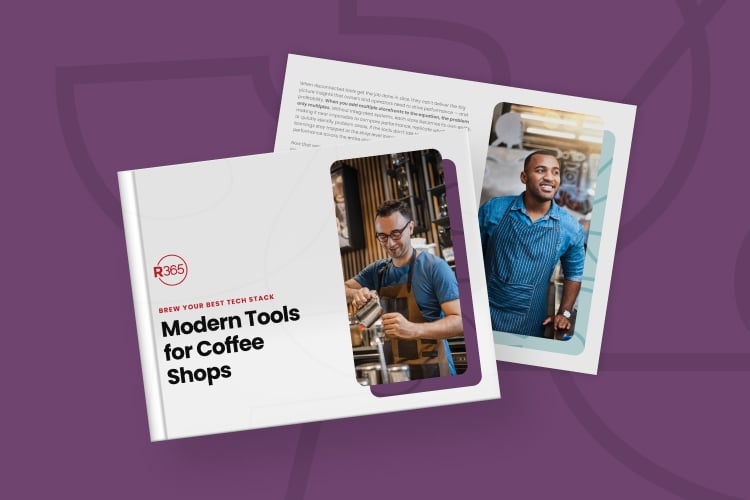As restaurant operators face unprecedented inflationary pressures, the need for cost control has never been greater. According to the Bureau of Labor Statistics (BLS), the Consumer Price Index (CPI) for food increased by 4.8% in February 2022 compared to the same month in the previous year. This is the largest year-over-year increase since 2009. With food costs at an all-time high, restaurants that don’t manage their inventory and associated costs accurately and efficiently risk seriously damaging their profit margins.
To help you optimize your restaurant’s cost of goods sold (CoGS), here are eight steps you can take to keep food costs in check and your restaurant on track.
#1: Forecast to Optimize Purchasing
Restaurant sales forecasting is a way to estimate your KPIs and sales on a weekly and monthly basis. It helps you determine what customer traffic trends look like and what menu items and product mixes look like. Those are going to change and evolve over the course of a year based on trends and the pricing/availability of product. Forecasting looks at the current trend and historical sales data to help you make smart labor and purchasing decisions.
A forecast is a very powerful operational tool. It provides your managers with the data they need to help run the business. They’re going to know what their sales and their weeks are going to look like because they’re there in the trenches. They’re running the business, using their forecasting models. They can then start to predict what and how much inventory they must purchase, what staff they’ll need and how much product they must prep. Restaurant365’s two part series on forecasting will walk you through all the necessary steps to forecasting for your operation.
#2: Count Regularly
Let’s face it. Inventory management is one of the less glamorous parts of the restaurant industry, especially at the end of a long shift. But implementing a consistent inventory management process is one of the single best ways to produce CoGS and turn it to profits. Get your teams on a regular counting schedule, with consistent manual counts on the same day of the week at the same time.
Once your inventory management is set up and humming, you get to reap the benefits of all that work. By having access to accurate, up-to-date data on your counts, you can easily analyze your CoGS, identify inconsistencies, and find areas to improve. Using a restaurant inventory management software provides you with all the data you need.
To learn more about setting up an efficient inventory management system to scale your restaurant, check out our free guide here.
#3: Conduct Micro-Inventory Counts
Your restaurant teams are always short on time, so every moment counts. While it’s impossible to check every item every day, identify your 10-20 most commonly used and expensive items. Roughly 20% of your inventory items make up approximately 80% of your CoGS. Conduct a full inventory count monthly and count the more expensive items once or twice per week. Use a key items, non-GL posting, and item cost percentage breakout report to identify these items.
These key items can be assigned in your restaurant management software, where they can easily be tracked to see how much they’re contribute to your CoGS and any changes. Using a semi-weekly cadence for these items allows you to identify changes immediately and can reduce CoGS significantly.
#4: Integrate Inventory & Accounting Software
Integrating inventory and accounting software provides real-time insights into costs and performance to enable agility. Whenever you acquire, count, transfer, or waste inventory, it must be entered as a journal entry in your accounting general ledger. Automating the journal entry process minimizes errors in manual inventory journal entries, and automated inventory management integrated with accounting bolsters your ability to reduce CoGS and grow margins.
To learn more about the importance of inventory and accounting working together, read about the multiple benefits here.
#5: Review CoGS Daily
While inventory counts range from monthly to semi-weekly depending on the item, your CoGS should always be reviewed daily. It’s the first step to leveraging the vast amounts of data being generated and is where you will spot challenges and opportunities as they arise. Inventory data can illustrate daily inventory consumption, popular or expensive ingredient usage, and food cost trends over time.
#6: Record & Track Waste
According to a 2021 study by the National Restaurant Association, only 47% of restaurants track food waste. This lack of oversight is a huge contributor to waste. A study by Grand View Research estimated that restaurants waste 10% of their food inventory before it reaches the table.
Food waste happens. And while it’s impossible to eliminate completely, you can greatly reduce waste by being vigilant and, just as importantly, consistently recording it. Use a food waste report to record when it happens and analyze it later. Capture critical facts, such as who, what, where, how, and why, and use your waste log data to implement new training or policies.
#7: Consider Non-Food in Inventory Control
To boost margins, ensure every source of cost is accounted for. Your CoGS consists of all products you purchase to make the items you sell, and supplies such as napkins, coffee filters, etc., must be included. For delivery and takeout, CoGS also includes packaging, utensils, and other extras that aren’t part of dine-in items. While these wont be your high-cost key items, they’re used every day, and should be tracked on at least a monthly basis.
#8: Educate Teams on Inventory & Waste
Knowledge is power, so train and retrain employees to properly store, monitor, and use inventory ingredients. Implement a plan to reduce food waste and educate employees on the environmental and social benefits.
To take this a step further, consider implementing open book management (OBM) at your restaurant, a process that involves sharing financial information with employees and involving them in the decision-making process. Some restaurant operators like to play their financials close to the chest, but OBM’s growing popularity in the restaurant industry has seen operators reduce turnover and reduce CoGS by engaging their employees and fostering a sense of ownership in the business.
Conclusions
Managing inventory and associated costs is by no means an easy process, especially in the restaurant industry where managers juggle many areas of their business. But optimizing your CoGS to keep food costs is one of the single best things you can do to help your establishment grow.
These strategies can significantly help manage inventory, reduce waste, and improve margins. By implementing them, restaurant operators can breathe a sigh of relief as they see that percentage start to fall.



